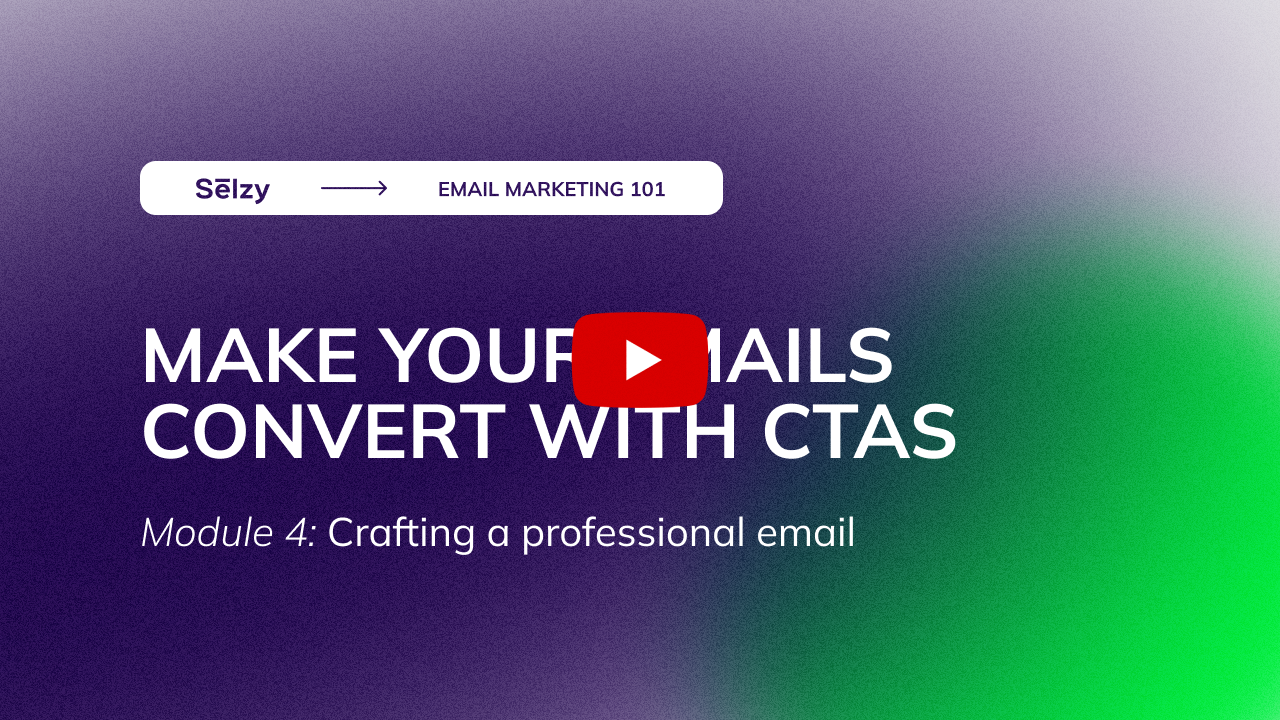How to Make Your Emails Convert with CTAs
This is a transcript of lesson 11 of Email Marketing 101 Course by Selzy.

Welcome back to module 4 of Selzy’s course on email marketing! In the previous lesson, we talked about email copy. And today, we’re going to tackle CTAs.
As you know, CTA, or a call-to-action, is a text prompt that pushes readers to a specific action. Let’s find out how to make CTAs your secret weapon and attract as many clicks as possible.
Tip #1: Use clear action verbs and be personal
This way, you’ll speak to readers directly and motivate them more.
There’s a nuance, though. Please don’t ask people to do what they aren’t ready for. If they just learned about your offer or product, they may not want to purchase it just yet. So instead of “buy,” write “add to cart” or “try.” People click on the button more easily if it doesn’t ask too much from them.
What you see on the screen right now is a CTA example that follows this rule. “Get yours” is a personal message, and it’s an easy action.

This visual is only available in a video lesson
Tip #2: Make CTA a button instead of a link
According to research, buttons convert 28% better. Buttons are bigger and more noticeable, so it’s natural for people to click on those more.
The email you see on the screen has two CTAs. The first is a link, and the second is a button. Which one would you click? The answer is pretty obvious, right?

This visual is only available in a video lesson
Tip #3: Place your CTA on the first screen
According to some research, moving the CTA from the middle to the top can give a 17% increase.
But hey, who said there should be only ONE CTA-button? Look at this email here. It has 2 CTAs.The first one is placed right at the top of the email to make readers click right away. And the second one is meant to “catch” those who didn’t click before.

This visual is only available in a video lesson
Tip #4: Show your readers the value they will get
Be as specific as possible, use numbers: the discount percentage or the amount of money.
Take a look at the CTA on your screen. It highlights the benefit for the reader with the “20% off” text.

This visual is only available in a video lesson
Tip #5: Use whitespace
You probably noticed how the CTAs in all the examples were contrasting colors. But it’s not JUST about contrast. These emails also had empty spaces to draw more attention to the buttons. So the main tip is: don’t pile everything up in one place.
What you see on the screen is an email that needs more whitespace. It’s hard to read, and the CTA is buried under all the other text.

This visual is only available in a video lesson
Tip #6: Pick the right color
Color can make your CTA stand out. But it doesn’t have to be an extremely loud, neon shade. Look at the background of your email and pick a color that will pop but won’t seem out of place.
Look at this example here. The CTA isn’t a bright red color yet it clearly stands out. Plus, yellow nicely complements the blue gradient of the background. So this CTA is easy to spot plus it doesn’t clash with the rest of the email.

This visual is only available in a video lesson
If pairing colors with one another isn’t your strong suit, use a special tool to do it for you. We added links to different online contrast checkers and finders below the video.
Tip #7: Don’t overdo it
Several CTAs in one email can boost the click-through rate, but too many of them can lower the effectiveness.
To make all CTAs work for you, make them all different and stick to a hierarchy. Place the most important CTA close to the main section of the email. And place secondary CTAs toward the bottom of the message.
The email you see on your screen has 3 CTAs. They are all different and well-organized. The most important one — shop — is placed close to the start of the email for maximum attention.

This visual is only available in a video lesson
Now that you know how to make great CTAs, it’s time to put them to good use! Watch the next lesson to learn all the ins and outs of stellar email design and layout.
This is a transcript of lesson 11 of Email Marketing 101 Course by Selzy.